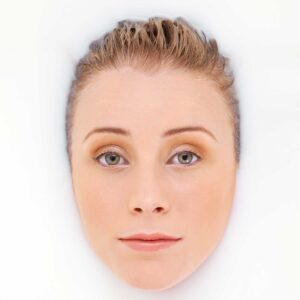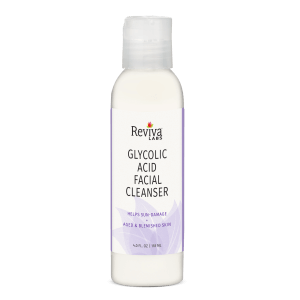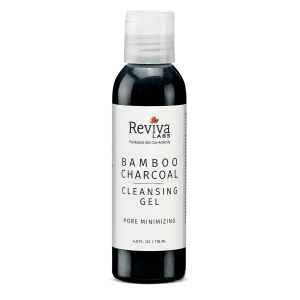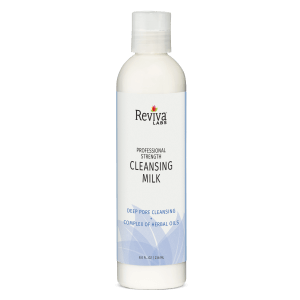Natural, Reviva Labs, Skin Care
Am I Over-Cleansing My Skin?
In the quest for radiant, flawless skin, we often arm ourselves with a myriad of skincare products and rituals. Cleansing, being the cornerstone of any robust skincare regimen, is especially revered. However, in our zeal to achieve that impeccable, blemish-free complexion, there’s a looming question that often goes unasked: Am I over-cleansing my skin? This concern is far from trivial, for the line between thorough cleansing and over-cleansing is thinner than one might assume.
Understanding Your Skin’s Natural Balance
Before diving into the nuances of over-cleansing, it’s crucial to understand the skin’s natural ecosystem. Our skin is not just a protective barrier; it’s a dynamic, living organ teeming with natural oils, beneficial bacteria, and a delicate pH balance. These components work in harmony to protect against environmental aggressors, retain moisture, and keep the skin resilient and healthy.
However, this balance is a delicate one. The skin’s natural oils, while often villainized, play a vital role in maintaining its integrity. They provide lubrication, keeping the skin supple and aiding in the natural shedding process of dead skin cells. When this balance is disrupted by overzealous cleansing, the skin’s ecosystem can go awry, leading to a plethora of issues.
The Telltale Signs of Over-Cleansing
But how can one discern between thorough cleansing and over-cleansing? The answer lies in understanding the signs your skin exhibits. Over-cleansing often manifests in a series of unmistakable symptoms. If your skin feels unusually tight, stripped, or parched after cleansing, it might be a cry for help. This tightness is often misconstrued as a sign of cleanliness, but in reality, it signals that the skin’s natural oils have been stripped away aggressively.
Another red flag is persistent irritation or redness, which indicates that the skin’s protective barrier has been compromised. In a desperate attempt to heal itself, the skin might ramp up oil production, leading to an uncharacteristically shiny complexion, or even acne breakouts, as the skin tries to restore its natural balance. Furthermore, an increase in sensitivity or a sudden intolerance to skincare products you’ve used comfortably in the past can also be indicative of a compromised skin barrier due to over-cleansing.

Choosing the Right Cleansing Routine
Navigating the fine line between effective cleansing and over-cleansing hinges on choosing the right products and understanding your skin’s unique needs. A universal rule is to opt for gentle, hydrating cleansers that cleanse effectively without stripping the skin of its essential oils. Ingredients that support the skin’s natural barrier, such as ceramides, fatty acids, and hyaluronic acid, are beneficial additions to any cleanser’s formulation.
Moreover, personalization is key. What works for one person might not work for another. For instance, individuals with oily or acne-prone skin might gravitate towards cleansers with active ingredients like salicylic acid. However, these potent ingredients, while beneficial in controlling excess oil and breakouts, can be drying if used excessively. Hence, understanding your skin type and its current state is paramount in selecting the right cleansing products and routines.
Balancing Act: Frequency and Technique Matter
Equally important to the choice of cleanser is the frequency of cleansing and the technique employed. The golden rule is to cleanse no more than twice a day – once in the morning and once at night. Nighttime cleansing is particularly crucial as it removes not just makeup and sunscreen, but also the pollutants and impurities that accumulate on the skin throughout the day.
However, morning cleansing is a subject of debate. While it’s beneficial for removing the oils and cellular debris that accumulate overnight, individuals with dry or sensitive skin might benefit from simply rinsing with water in the morning or using a very gentle, hydrating cleanser.
The technique of cleansing also plays a pivotal role. The skin should be treated with utmost gentleness. Harsh scrubbing or using overly hot water can lead to irritation and strip the skin of its natural oils. Instead, one should opt for lukewarm water and use gentle, circular motions, allowing the cleanser to do its job without mechanical force.
Incorporating Restorative Steps Post-Cleansing
Post-cleansing care is an integral part of any skincare routine, especially if you’re navigating the tightrope of cleansing just right. After cleansing, the immediate application of a hydrating toner or essence can help restore moisture and prepare the skin for the subsequent steps in your routine. Follow this with a moisturizer suited to your skin type to lock in hydration and protect the skin barrier. At night, consider products with restorative ingredients like peptides, antioxidants, or retinoids, which work in tandem with the skin’s natural repair processes.
The journey to vibrant, healthy skin is a nuanced one, with cleansing playing a pivotal role. However, like any good thing, moderation is key. Being attuned to your skin’s responses and understanding its unique needs can prevent the pitfalls of over-cleansing. By choosing the right products, adhering to a balanced cleansing routine, and following up with restorative skincare steps, you can maintain your skin’s delicate ecosystem, ensuring that it remains resilient, radiant, and healthy. Remember, when it comes to skincare, sometimes less is indeed more.











